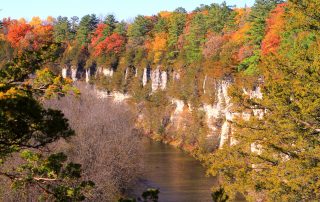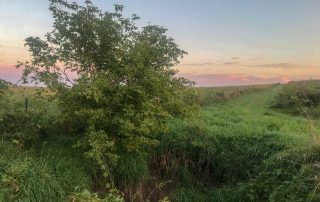2.3 Geology
The Iowa Geological and Water Survey Bureau completed a detailed mapping project of bedrock geologic units, key subsurface horizons, and surficial karst features in the Iowa portion of the Upper Iowa River watershed in 2011. The project “provides information on the subsurface part of the watersheds, which is necessary for evaluating the vulnerability of groundwater to nonpoint-source contamination, the groundwater contributions to surface water contamination, and for targeting best management practices for water quality improvements”.


